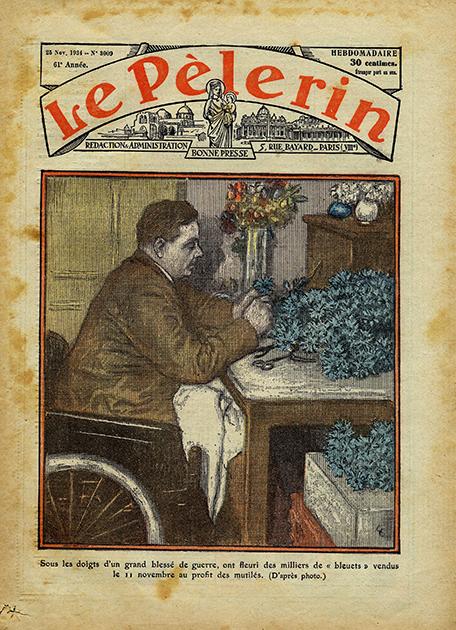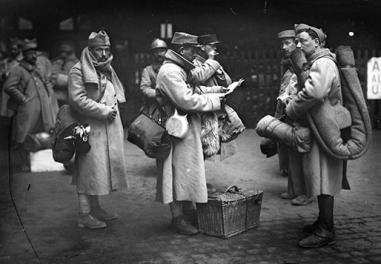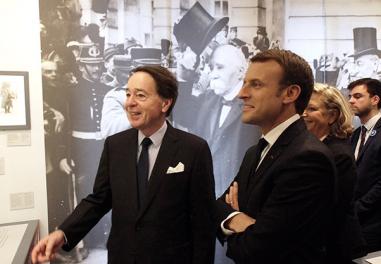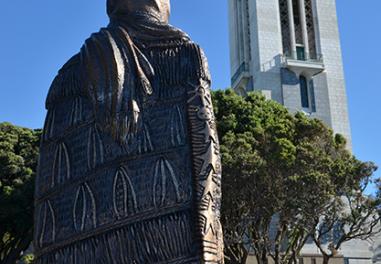To Bleuets, citizens!
The centenary of the year 1918 will give many the occasion to don the “Bleuet de France” which came about in the wake of the First World War. A symbol of remembrance and solidarity, the bleuet or cornflower still fulfils the same vocation today and provides moral support for the injured and victims of war.

In 2015 and 2016, terrorist attacks struck France to its core. War, which had fled French shores many decades earlier, had again reared its ugly head in the everyday lives of French citizens. Millions of people gathered in the streets to stand together against fear and freedom-destroying fundamentalism, uniting to honour the dead and show their solidarity with traumatised survivors. Many gained a new perspective on the engagement of armies in theatres of overseas operations.
This humanist momentum was not unlike that which energised the nation in the weeks and months following the Great War when hundreds of thousands of young injured and mutilated men were returning home to rebuild their lives and integrate back into society. What this unprecedented enterprise needed was funds in addition to state aid. The seed of an idea began to grow in the minds of two nurses at the Invalides hospital: set up a factory where convalescing soldiers could manufacture small fabric cornflowers to be sold for a profit that would build up a charity fund. A national symbol was born! The cornflower is associated with many references. During the war, young recruits, wearing a new uniform in sky blue, were affectionately known as ‘Bleuets’ (cornflowers) by their elders. Cornflowers and poppies were also the only blooms to grow in the churned-up earth following the fighting, evoking the force of life. The poppy became the symbol of remembrance in Britain and Commonwealth nations. It continues to enjoy widespread appeal today.
From 1934, the government made the sale of cornflowers official each 11 November and manufacturing facilities cropped up all over France. In 1957, a new collection was authorised on 8 May with profits donated to support troops in the Second World War.
What happened to the ‘Bleuet de France’? Threatened with extinction, the cornflower trademark was granted in 1991 to the French national bureau of former service people and victims of war (ONACVG), a public institution attached to the French Army Ministry. The collection campaigns, led with the support of veterans, armies, local authorities and volunteers from all backgrounds raise just over a million euros each year.
Since 2012, French professional sport has backed this charitable initiative: Stade Rennais football club was the first to adopt the bleuet in official matches. For the occasion of the centenary of the Great War, the French rugby and football teams, as well as the League 1 and 2 teams, became ambassadors of the iconic blue flower. Following the example of the French President, a number of elected officials and senior members of the military authorities wear the bleuet de France at remembrance ceremonies. Commendable actions that are also broadcast widely by the media.
Manufactured by disabled worked, the bleuets are sold to “help those still with us”, soldiers from today and yesterday, the injured, widows, wards of the nation, victims of war and acts of terrorism. A proportion of the donations collected also fund remembrance actions, in particular those aimed at schools.
This year, in memory of the infantrymen, and in solidarity with those who served and serve for France at the risk of their life and those taken from us forever by war or terrorism, wearing the bleuet is a powerful, universal and intergenerational act of citizenship.
Read more
Articles of the review
-
The file

1918, exiting from the war
The Armistice of 11 November 1918 was the catalyst for a complex period during which the withdrawal of four million soldiers was enacted. The first phase consisted of demobilising the troops, in other words organise their repatriation home. For many, above all soldiers sent from the colonies, demobi...Read more -
The event

2018: the Year of Clemenceau
Read more -
The interview

Bridget Gee
Bridget Gee is head of external relations at the New Zealand embassy in Paris. In her role, she is in charge of planning Franco-New-Zealand commemorations, especially the 2018 inauguration of the French monument in Wellington.
Read more

